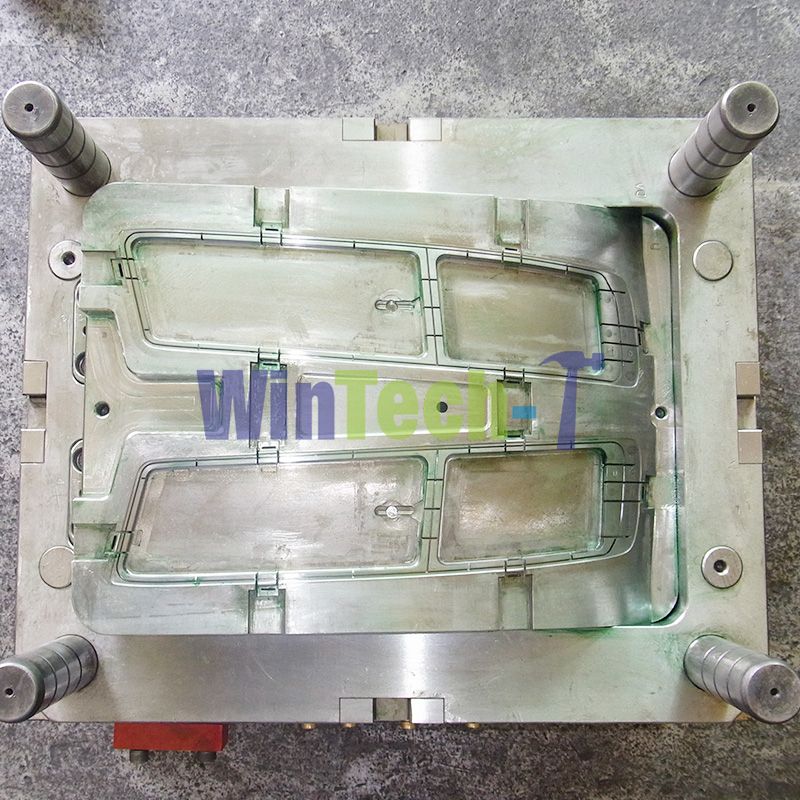Rapid Tooling: Revolutionizing Manufacturing with Speed and Efficiency
Hey there, folks! Today, I want to talk about a game-changing process that's taking the manufacturing world by storm. It's called Rapid Tooling, and let me tell you, it's turning heads and sparking excitement among industry insiders.

What is Rapid Tooling?
So, what exactly is Rapid Tooling? Well, my friends, it's a technique that allows manufacturers to swiftly and efficiently create molds, prototypes, and even end-use parts for production. With Rapid Tooling, businesses can bring their ideas to life faster than ever before, giving them a competitive edge in the market.
The Need for Speed
In today's fast-paced world, speed is everything, and that's where Rapid Tooling comes in. Traditional manufacturing methods often involve long lead times, extensive tooling processes, and costly iterations. But with Rapid Tooling, manufacturers can significantly reduce the time it takes to go from concept to a tangible product.
How Does Rapid Tooling Work?
Let's dive into the nitty-gritty of how Rapid Tooling works, shall we? First off, a digital model of the desired product is created using computer-aided design (CAD) software. This digital model serves as the blueprint for the entire manufacturing process.
Next up, the digital model is used to generate toolpaths and instructions for the Rapid Tooling machine. This machine, often a 3D printer or a CNC milling machine, then springs into action, using various materials to build the desired mold or part layer by layer.
The ability to quickly produce these molds and parts opens up a whole new world of possibilities. Manufacturers can test and validate their designs, make necessary tweaks on the fly, and iterate much faster than ever before. This level of agility is a game-changer in an industry where time is money.
The Advantages of Rapid Tooling
You might be wondering, what makes Rapid Tooling so special? Well, my friends, let me break it down for you. Rapid Tooling offers a range of advantages that traditional manufacturing processes simply can't match:
1. Speedy Production
As the name suggests, Rapid Tooling is all about speed. Manufacturers can slash their production time significantly, allowing them to meet tight deadlines and bring products to market in record time. In today's fast-paced world, being able to stay ahead of the competition is vital, and Rapid Tooling gives businesses that competitive edge.
2. Cost Savings
Traditional tooling processes can be quite costly, involving complex and time-consuming setups. Rapid Tooling eliminates many of these expenses by streamlining the entire production process. With reduced lead times, minimal material waste, and fewer iterations, manufacturers can save a significant amount of money throughout the production cycle.
3. Design Flexibility
With Rapid Tooling, manufacturers have the freedom to explore new designs and concepts without breaking the bank. The ability to quickly produce prototypes and molds allows for easy iteration and experimentation, ultimately leading to better end products. This flexibility is a game-changer for businesses looking to stay ahead of the innovation curve.
Applications of Rapid Tooling
Now that we understand the ins and outs of Rapid Tooling, let's take a look at some of its exciting applications across various industries:
1. Automotive
The automotive industry has embraced Rapid Tooling with open arms. From prototyping new vehicle parts to manufacturing custom components, Rapid Tooling enables automotive manufacturers to accelerate their product development cycles and stay at the forefront of innovation.
2. Aerospace
In the aerospace industry, precision and efficiency are of utmost importance. Rapid Tooling plays a vital role in creating complex, high-precision parts and tooling for aircraft. This technology empowers aerospace manufacturers to reduce costs, improve performance, and maintain stringent quality standards.
3. Consumer Goods
From household appliances to electronic devices, Rapid Tooling has revolutionized the consumer goods industry. With shorter product lifecycles and ever-changing consumer demands, manufacturers can quickly adapt and introduce new products to the market using Rapid Tooling techniques.
4. Medical
In the medical field, precision and speed can make a world of difference. Rapid Tooling has found its way into medical device manufacturing, enabling the production of customized implants, surgical instruments, and prototypes for research and development. This technology paves the way for medical advancements and improved patient care.
Embracing the Future of Manufacturing
There you have it, folks! Rapid Tooling is changing the manufacturing game, one mold at a time. Its ability to accelerate production, save costs, and unlock design flexibility makes it a force to be reckoned with.
As technology continues to advance, we can expect Rapid Tooling techniques to evolve and become even more accessible to businesses of all sizes. So, buckle up and get ready for a manufacturing revolution like never before. The future is here, and it's speedy, efficient, and full of endless possibilities.
797
0
0
All Comments (0)
Previous: Plastic Injection Molding: Crafting Innovation and Precision
Next: Boost Your Home's Energy Efficiency with an Insulating Joint
If you are interested in sending in a Guest Blogger Submission,welcome to write for us!


Comments